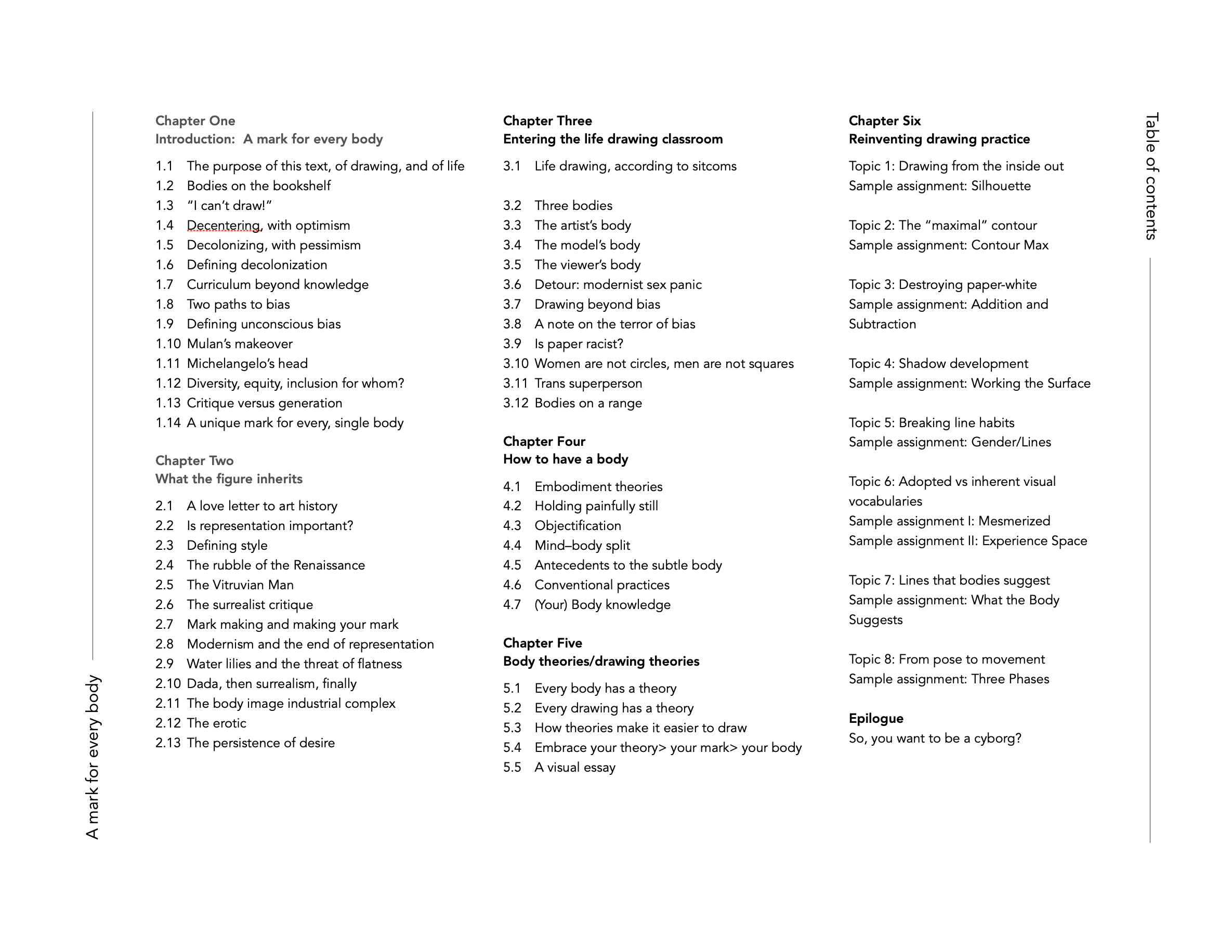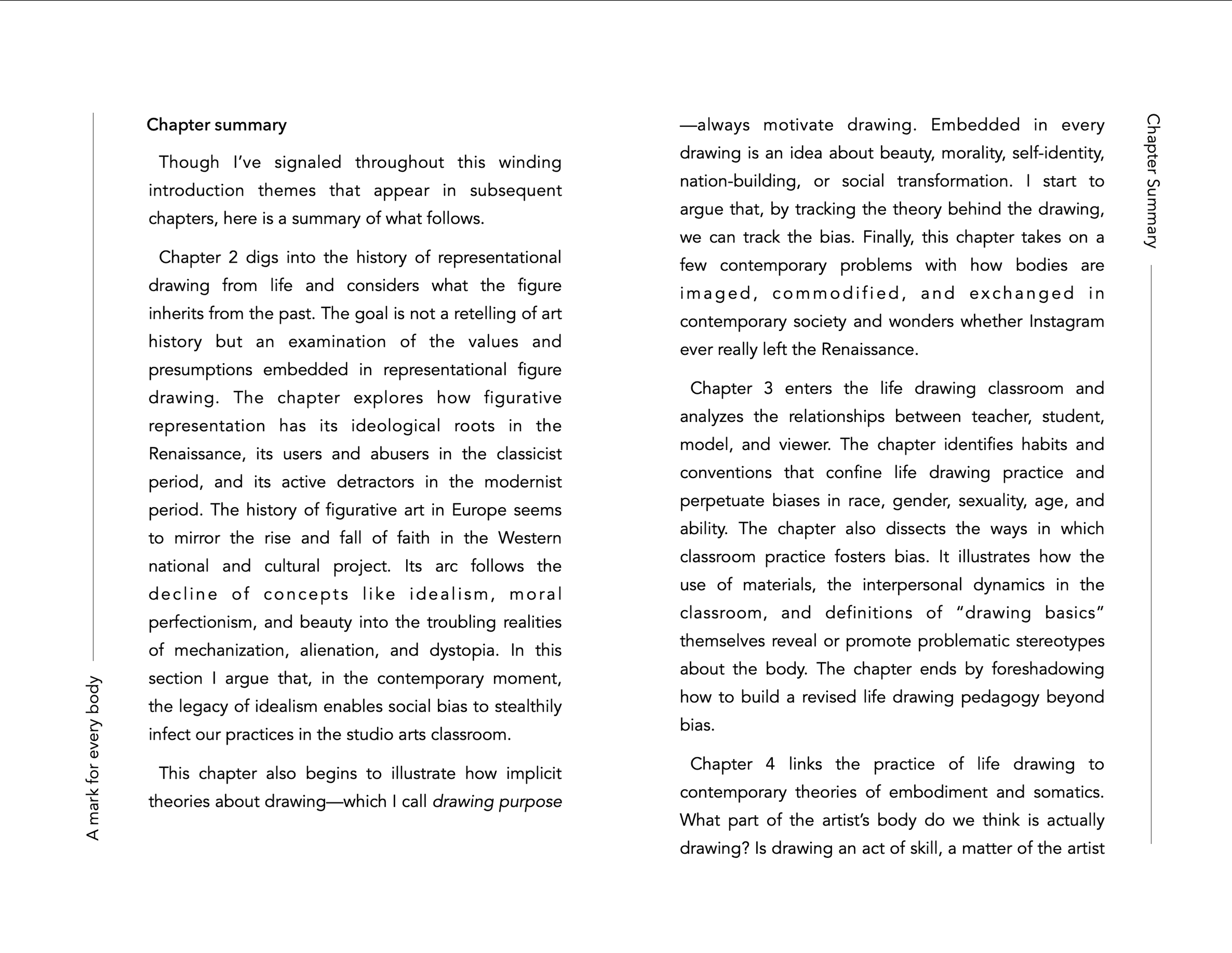A mark for every body is designed to be an accessible text for beginning and intermediate art students, in addition to a nonfiction survey for those interested in an expanded view of figurative art. The volume begins by reviewing contemporary trends in revising curriculum, in keeping with the values of diversity, equity, and inclusion. It draws out the meanings of "decolonizing" the curriculum and of "unconscious bias" and explores how these concepts apply to the contemporary studio art classroom.
The central argument of the text is that we can't transform the curriculum without reinventing classroom practice: how artists are taught to draw. It also offers pathways for undoing unconscious bias - analyzing pop culture ideas of "artistry," questioning the legacy of body idealism, and challenging the premise that good drawing is always about realism or beauty. The text argues that a progressive drawing pedagogy benefits all artists, independent of their social identity, offering more flexibility and choice in how we access, cultivate, and value creativity. The volume juxtaposes classic, universally celebrated examples of figurative art with contemporary artworks from notable international artists, artists of color, LGBTQ artists, women artists, and differently abled artists. Also, the volume intersperses examples of how the human body appears - for better or worse - in popular culture and social media. The text ends with ten practical studio exercises for drawing beyond bias.
The manuscript consists of seven chapters, 300 pages, 80,000 words, and 175 contemporary and historical images.




